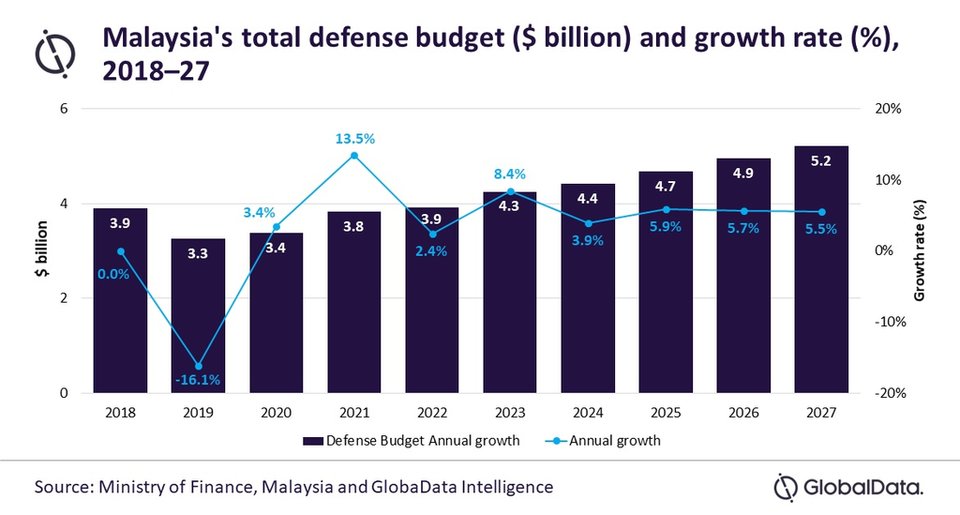DEFENCE SPENDING
Territorial disputes, modernisation efforts to spur Malaysia defence spending
Powered by
Malaysia will increase its defence spending by more than 5% to 2027, as regional countries look to meet emerging security challenges, forecasts GlobalData.
Malaysia’s plans to upgrade its current inventory to deal with the territorial disputes and protect its territory in the South China Sea will see its defence spending growing at an estimated compound annual growth rate (CAGR) of 5.3% over the period 2022-2027.
In GlobalData’s report, “Malaysia Defense Market Size and Trends, Budget Allocation, Regulations, Key Acquisitions, Competitive Landscape and Forecast, 2022-27,” it is revealed that Malaysia’s defence acquisition expenditure spending recorded a CAGR of 12.5% from $762.8m in 2018 to $1.2bn in 2022. The increase is largely attributed to a slew of defence procurements in military fixed-wing and naval vessels.
Malaysia has mostly focused on economic development and hence its military spending has largely remained flat. Most plans for force modernisation have been repeatedly delayed or cancelled due to economic cuts in the past, but a positive turn can be seen in the defence budgets passed by the parliament in the past few years with a significant jump of 8.4% annual growth in 2023.

Akash Pratim Debbarma, aerospace and defence analyst at GlobalData, commented: “Malaysia is aware of the technological gap in its navy and air force inventory to maintain control over its territories. To deal with this gap, Malaysia will need more warships and, perhaps, even ground-launched anti-ship cruise missiles to create a credible deterrence in the region. However, the country’s biggest acquisition program to purchase six units of Boustead Naval Shipyard’s second-generation patrol vessel – littoral combat ships and four littoral mission ships is expected to give a boost to its maritime capabilities.”
Other major ongoing procurements of Turkish Anka UAVs and AW139 helicopters to cover the retirement of the Nuri helicopters will satisfy Malaysia’s needs to boost its air force capabilities and secure its border territories.
Debbarma concluded: “With the Southeast Asian countries increasing their defence budget to deal with the territorial disputes in the South China Sea, Malaysia’s 2022 and 2023 budget shows the country’s desire to fulfil its transformational goals while meeting its security requirements. Malaysia’s defence budget is expected to reach $5.2bn in 2027 scaling up many planned and anticipated programmes.”